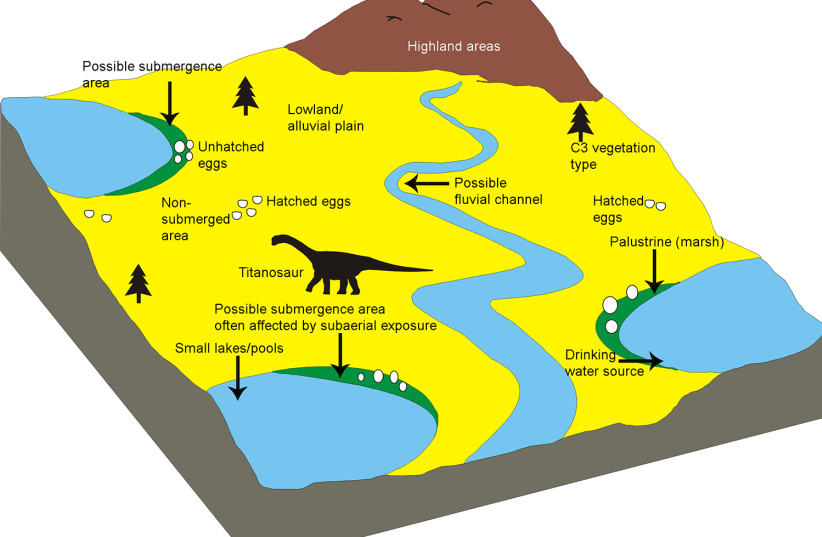Around 92 nesting sites containing over 250 fossilized eggs belonging to Titanosaurus, one of the largest dinosaurs to have ever lived, were recently discovered during research in central India.
The discovery was found in the Narmada Valley of central India, an area well-known for fossils of dinosaur skeletons and eggs from the Late Cretaceous Period. The study was published on January 18 in the journal PLOS ONE by Harsha Dhiman of the University of Delhi, New Delhi and colleagues and has been peer-reviewed.
“Our research has revealed the presence of an extensive hatchery of titanosaur sauropod dinosaurs in the study area and offers new insights into the conditions of nest preservation and reproductive strategies of titanosaur sauropod dinosaurs just before they went extinct,” said Harsha Dhiman, lead author of the research.
A wealth of data
There aren't many details known about dinosaur reproductive habits, which makes the fossil nests from a comparatively late period in dinosaur history an especially important source for a wealth of new data. These new insights will help paleontologists better understand the dinosaur's life and evolution.
The researchers found a number of interesting facts about Titanosaur eggs. They were arranged in nests and partially buried in the earth in shallow pits, similar to modern crocodilians. The mothers didn't provide body heat for incubation and instead relied on radiation heat from the sun or geothermal heat from the earth to develop the eggs.

Some of the eggs were found to have multiple shells, while others had another egg in them. This has not been recorded in Titanosaurus eggs before but is common in reptile or bird eggs. These pathologies indicate that the eggs were laid sequentially and not all at once.
The nests were mostly laid on soft earth relatively close to small lakes and ponds. The exact location was important, as nests that were laid too close to the water would sometimes get submerged and didn't hatch. The ones further away stood a better chance of hatching.
After hatching the juveniles had to fend for themselves and must mostly have left the hatching area, as no bones were found near the nests, neither of the juveniles nor of the parent titanosaurs.
“Together with dinosaur nests from Jabalpur in the upper Narmada valley in the east and those from Balasinor in the west, the new nesting sites from Dhar District in Madhya Pradesh (Central India), covering an east-west stretch of about 1000 km, constitute one of the largest dinosaur hatcheries in the world,” Guntupalli V.R. Prasad, co-author and leader of the research team added.
